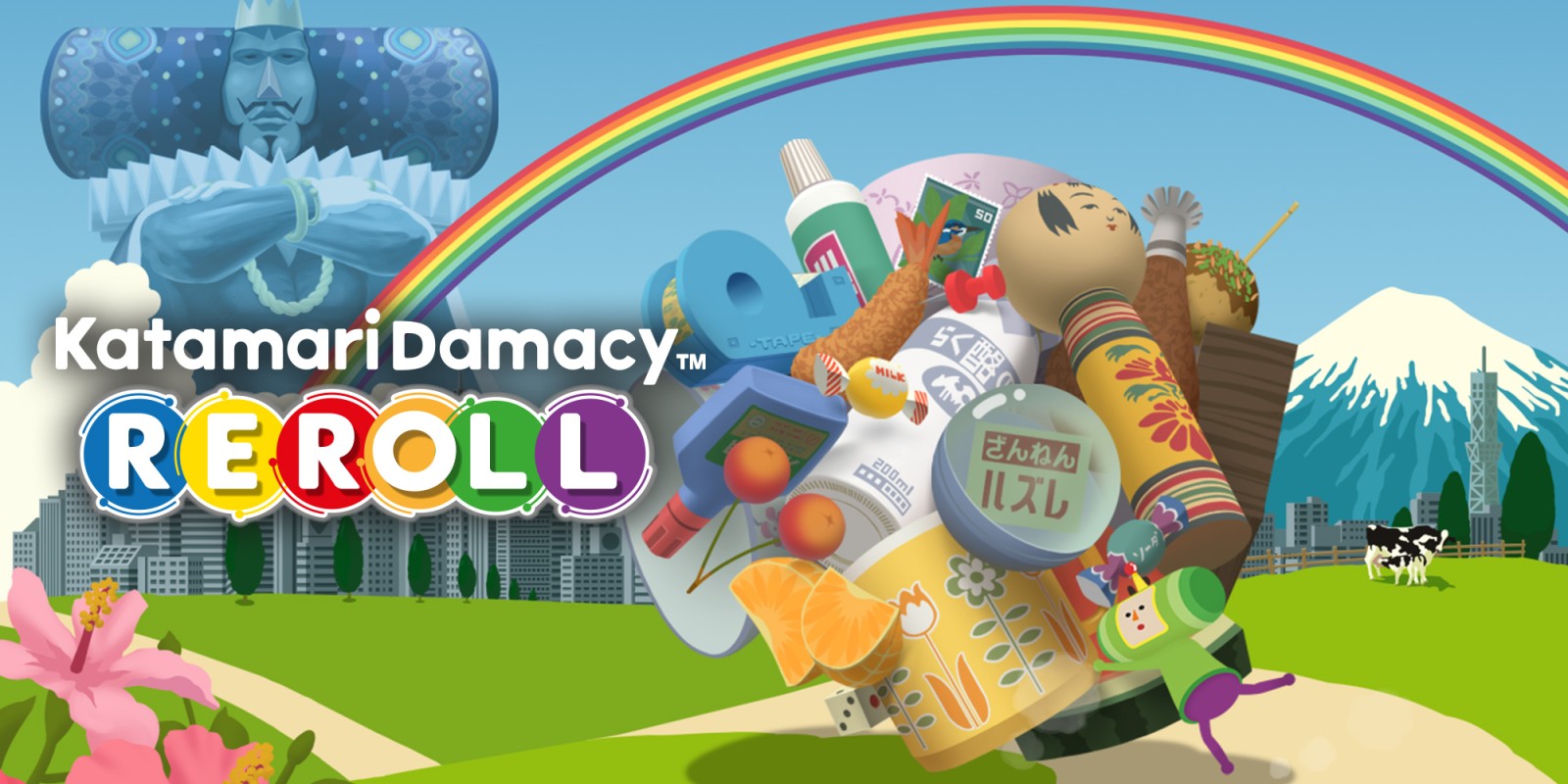
Reroll’s release on Switch and PC might represent something like closure for long-term onlookers of the Katamari series frustrated by its limited availability. The original Katamari Damacy was released on PlayStation 2 in 2004 – though never officially in Australia – while the series’ main sequels were all exclusive to Sony’s consoles (the single exception being Beautiful Katamari on Xbox 360 in 2008). But times have changed, and as things frequently are these days, the original game has been given a HD revamp for dissemination among the more computery and/or Nintendo-centric of us. Having only ever been a curious onlooker myself, I received a copy on Switch and got rolling.
Of course, chances are you already know about Katamari, on a conceptual level at least, even if you haven’t ever actually played it – it’s one of those games that seems to have permeated into the broader consciousness beyond what its market might imply. Using both joysticks only, you roll a ball around a 3D level strewn with “stuff”. You’ll bounce off any larger items, but anything smaller than your ball will adhere to it, thereby increasing its diameter. As you grow, you’re able to sticky larger and larger things, so while at the start of a level you might only be able to collect say, drawing pins and bananas, by the timer’s depletion you might be rolling through people, elephants and cars. By the end of the game even buildings, giant sea monsters and parts of the level itself seem up for grabs – it’s a game with an impressive sense of shifting scale. The challenge of the main ‘make a star’ levels is usually to grow to a certain size threshold within a certain time, although there are variations in the constellation levels where you’re just expected to collect as many of a certain item as you can.

The Katamari rolls straight through collectible “smaller” items without losing momentum, but bounces hard off anything it can’t collect, distressingly sending accumulated paraphernalia (aka your progress) flying in all directions. Each level is, therefore, an ever-evolving obstacle course, but one in which the protagonist is an increasingly unwieldy blob with an unconventionally slow turning circle. It’s an intuitive game to play, although often it takes a bit of guesswork as to when you’re actually big enough to roll up any particular item. For these reasons, Katamari carries in it some interesting tensions: it is conceptually simple, but (deceptively) mechanically taxing. It’s low-stakes and relaxing, but it never allows the player to enter what you might call a flow state, which seems to be contrary to the design aims of most platformers and puzzlers. But this is, I think, what makes Katamari timeless and unique among games. Nothing else plays quite like this.
Admittedly it does, by nature, sometimes become frustrating, but here Katamari is rescued in part by distinctively you-can’t-be-mad-at-me cute visual aesthetics, but overwhelmingly by a truly exceptional soundtrack. Part 2000s synthwave, part melodiously plucked pop with the occasional bow to lounge, it is dynamic, catchy, generous and expansive, sun-speckled with the odd hint of melancholy and, I think, probably one of the best game accompaniments of the post-chiptune era. More practically though, it makes a great counterpoint to the occasionally patience-testing gameplay.

Katamari Damacy is also wrapped in an unapologetically zany framing narrative. The King of the Cosmos went on a drinking binge and accidentally wiped out all the stars, so his nephew, the prince, ostensibly you, a tiny wide-headed green suit, has to roll up a lot of balls of stuff from earth to replace the stars, constellations and the moon. The King is funny, whether it’s in his weird quips that come from or lead nowhere, or his excessively bitter disappointment when you fall short of hitting a level’s size requirements – it’s sometimes almost worth the redo for. In post-level cutscenes, the game also shows a quirky side-story of a family, where the father is unable to do his job as an astronaut because the moon has disappeared. Unfortunately, I accidentally skipped through a lot of these because I’d been mindlessly pressing ‘A’ to get through the post-level dialogue, and the same button skips the cutscene, which honestly feels like a minor oversight. Oops.
The main objection – the only significant issue I can think to raise here – is why we got this version of Katamari when say 2009’s Katamari Forever includes all these same levels and more besides, not to mention a co-op mode. The latter stings particularly because the multiplayer battle mode that does exist in Reroll seems rudimentary and offers little inherent replayability. It’s also hard not to notice that the game reuses some of its level designs a few times – not a huge deal as the variation comes more from what you need to collect and how quickly, but it’s still showing the bones of the original game’s budget, and in this version of Katamari there aren’t all that many levels, to begin with. The graphical touch-up of the original seems clean and good on the Switch, at least, though the PC port is presumably a whole other kettle of fish that I cannot comment on.

Reroll reaffirms that 14 years after its debut, Katamari Damacy remains a bright streak of design vision and an iconic waft of imagination. It’s the kind of no-fuss game that’s fantastic in short bursts, which makes it well suited to the handheld console (I played through a lot of this in bed while interstate and visiting my folks, for example). It’s a fun world to flitter in and out of, and it has one of the best soundtracks imaginable. I do wonder if Bandai Namco could have done more than just plonking the original game out here, but I guess at the end of the day they knew what they had held up, in all its grand simplicity, pretty well.











